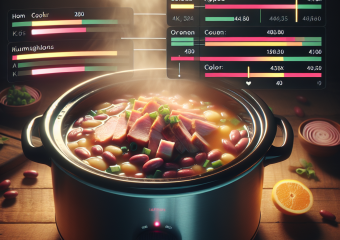Are Grits Healthy? Here’s What a Dietitian Says – EatingWell
:max_bytes(150000):strip_icc()/Are-Grits-Healthy-1-16f20e57eaac471bb29093686afaa4c3.jpg)
Grits are a popular Southern dish made from ground corn. It can be enjoyed either as a sweet or savory dish, as a simple or complex dish—you can eat them for breakfast, as a side dish for dinner or as a main course, such as shrimp and grits. Grits are easy to make and have some impressive nutritional benefits, too. Keep reading to learn more about grits, including the different types of grits, how they stack up compared to oatmeal and if you can eat them if you have diabetes.
What Are Grits?
Grits are made from dried, ground dent corn, with a higher starch content than other corn varieties. The ground corn is boiled with milk, water or broth to reach a creamy, porridge-like consistency.

The simplest way to enjoy grits is with butter and milk. However, you can serve grits with cheeses, spices, sauces, vegetables, meat and seafood.
Similar to oatmeal, there are different varieties of grits. To better understand them, it helps first to break down the anatomy of a grain. A whole grain kernel is made up of:

- The hull (the tough, outer layer)
- The bran (the next fiber-filled layer, which is high in B vitamins)
- The endosperm (the starchy carbohydrate middle layer)
- The germ (the nutrient-packed core)
The varieties of grits include:
- Stone Ground: These are the least processed form of grits and have the most fiber. Whole dried corn kernels are coarsely ground, which means all the whole-grain nutrients are maintained, including fiber and B vitamins. This variety usually has a heartier texture and strong corn flavor.
- Hominy: The corn kernels are soaked in lime or lye, which softens the outer hulls. The outer hull is then removed, along with the fiber. Still, the germ is retained, filled with nutrients like B vitamins and vitamin E.
- Quick & Regular: These grits are finely ground and have the hull and germ removed, so they cook more quickly. They have a longer shelf life, but they, unfortunately, lose most of their nutritional value in processing. Often vitamins and minerals are added back in, so you may see “enriched” on the ingredients list.
- Instant: These grits are processed, precooked and dehydrated, so they are ready to eat simply by adding boiling water. The outer layer and germ of the kernel are removed, taking most of the nutrients with them.
Are Grits Good for You?
Stone ground grits are good for you, as they provide all the nutrients of a whole grain—including fiber, complex carbohydrates and several necessary vitamins and minerals. The most commonly consumed grits, however, are regular and instant versions that have been processed. This means they have less fiber and fewer vitamins and minerals. One cup of instant grits made with water has 2 grams of fiber and 3 g of protein, whereas one cup of cooked rolled oats, which has 4 g of fiber and 6 g of protein.
Like other fortified cereals, enriched grits are a good source of iron, with one serving delivering 100% of the recommended Daily Value. Pair them with fruit in the morning for optimal absorption—vitamin C helps increase the absorption of plant-based iron. Or try
Grits aren’t just for breakfast, though. Try a savory version, like Shrimp & Grits with Tomato or Shrimp-&-Grits Stuffed Peppers. And while they have breakfast in their name, Creamy Breakfast Grits with Goat Cheese can be eaten any time of day. Pairing your grits with a variety of other foods also increases the nutritional value of the dish, so feel free to add fruits, vegetables, cheese and protein to create your own healthy recipes.

Plain grits are also naturally low in calories and fat. They are also high in B vitamins, such as niacin, thiamin, riboflavin and folate, either naturally occurring in the corn kernel or added back after processing. B vitamins help keep metabolism, cells and energy levels healthy. Grits are also rich in lutein and zeaxanthin, two antioxidants that keep eyes healthy.

Grits Nutrition Facts
Here are the nutrition facts for 1 cup of cooked grits (enriched instant grits, prepared with water) per the USDA:
- Calories: 156 kcal
- Carbohydrate: 36 g
- Fiber: 2 g
- Total Sugar: 1 g
- Added Sugar: 0 g
- Protein: 3 g
- Total Fat: 1 g
- Saturated Fat: 0 g
- Sodium: 0mg
- Iron: 18 mg (100% Daily Value)
Can You Eat Grits If You Have Diabetes?
It’s a myth that people with diabetes can’t eat carbohydrate-rich foods like grits. You can still enjoy grits when you have diabetes—The American Diabetes Association recommends those with diabetes could follow the Diabetes Plate Method when enjoying meals, filling one-quarter of the 9-inch plate with carbohydrate-rich foods. Pair these carb-rich foods with half a plate of nonstarchy vegetables and one-quarter lean protein foods to slow blood sugar spikes.
On their own, grits have a low amount of fiber and protein. They can become more or less healthful, depending on how you prepare them. Grits are typically served with whole milk or cream, butter, cheese, maple syrup, bacon or fried fish, making a delicious comfort dish, like our Cheesy Grits with Seared Mushrooms. You can also combine grits with ingredients like skim milk, olive oil, fruits and/or vegetables to boost the dish’s nutritional value—Our Shrimp-&-Grits-Stuffed Peppers is a balanced dinner option and is diabetes-friendly.
The Bottom Line
Grits are an easy, versatile dish that can be good for you, depending on the variety you choose and how they are prepared. Opt for stone-ground grits and swap butter and cream for other healthy toppings like olive oil and fresh whole foods to lower the saturated fat and sodium in your meal and give your grits a nutritious boost.




